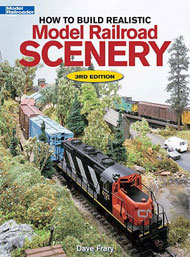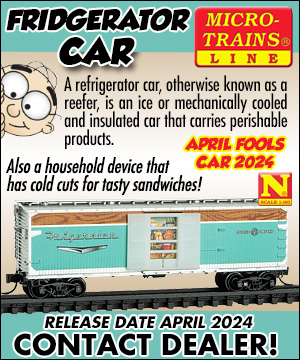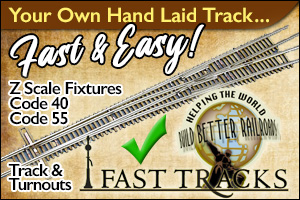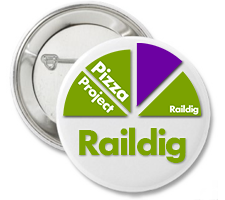Dave Frary | Blue Ribbon Models
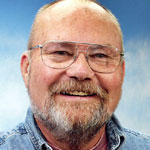
If you’ve ever walked into a hobby shop and looked at the book rack or picked up a copy of Model Railroader, you’ve likely seen Dave Frary’s work. Dave has written the definitive guide to model railroad scenery in his book, How To Build Realistic Model Railroad Scenery, now in its 3rd revision. In addition to this guide Dave has penned six additional titles and also has produced a series of DVDs that can greatly reduce your scenery learning curve while giving you outstanding results. Visit Dave’s Blue Ribbon Models website.
How long have you been involved in model railroading, and how were you first introduced to the hobby?
I’ve been interested in trains for as long as I can remember. My involvement started on my 10th birthday when my father gave me a Ping-Pong table Lionel layout built by a friend of his. It was a big surprise! I never noticed that everything was second hand and most of the equipment had been repaired. I ran the trains, at full speed, day and night.
About a year or so later on one of my bicycle trips, I went into a “news” store and saw a huge selection of magazines. The November 1951 issue of Model Railroader jumped into my hands. It cost my week’s allowance of $.50. I read it from cover to cover hundreds of times and couldn’t wait for the next issue. It got so that I knew the day and the time the magazines were delivered, and the guy who ran the store would let me open the bundle to get a fresh copy of MR.
About the same time a rich uncle gave me a Contaflex SLR 35mm camera. Every penny of my paper route money went for magazines and film. I read every book on photography at the public library and got a job in the darkroom of a neighbor who photographed shoes and boxes of chocolates. I started learning the photo trade.
You have a large body of model railroad instructional material in both print and video. How did you get your start as an author?
In the small New England town where I lived I met Bob Hayden (who was trying to build a HOn2 layout in his bedroom.) His father was one of my school teachers. We became friends and, after college, we began writing articles for Railroad Model Craftsman. Tony Koester was the editor in those days and liked what we presented to him. He asked if we’d be interested in building and reviewing kits for the RMC Test Track column. He would send us new products and kits for review. During this time Bob went in the Navy and I went to work for N.A.S.A. as a photographer. I’d build the Test Track models and take photographs, and Bob, under the South China Sea, would write the text from my notes. It was a good system, one year we reviewed over 80 kits and products!
After the Navy, Bob got a job as Books Editor for Kalmbach Publishing Company. In 1980 he asked if I’d be interested in writing a new scenery book. The scenery book that Kalmbach offered at that time was by Bill McClanahan and it was getting dated. I starting by reading everything ever printed, both here and abroad, about building scenery. I wanted a system presented like a cookbook that would allow anyone, regardless of skill level, to produce realistic and repeatable results. How to Build Realistic Model Railroad Scenery was published in 1982. Along the way I wrote 6 other titles on scenery, structure building and photography.
Your aforementioned book is now in its third edition. Why do you think this book has become such a staple for model railroaders?
When it was published, How to Build Realistic Model Railroad Scenery was the only book of its kind. It was a book that promised results. If you follow the directions you get terrific looking scenery. It’s become Kalmbach’s largest selling book.
The latest version, 3rd revision, required a different format. It was greatly influenced by all the modelers who took the time to tell me what did and didn’t work for them. The information is based upon the latest techniques and materials I use today to build scenery.
What do you feel separates good scenery from great scenery?
Execution, realism and attention to detail. I’ve always stressed that the scenery you build only has to please YOU! You can make it as plain or as detailed as you like. This is a hobby, a past time, stress reliever, and is supposed to be fun. Your good scenery may be someone else’s great scenery.
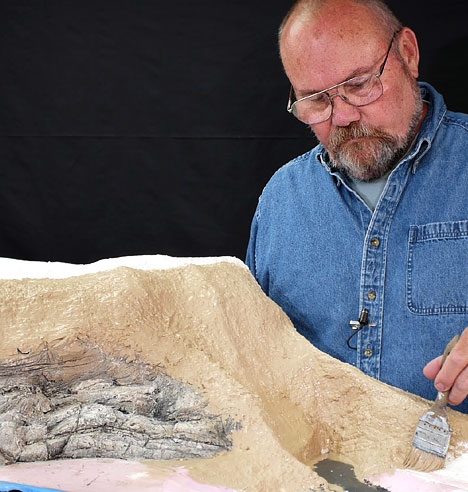
Dave working on a scene
Do you have a general overall approach or philosophy when you begin a new scenic design project?
On some projects it’s easy. The customer has drawings, photos and notes for a specific prototype and I build from them. All I have to do match rock types and colors. I buy the trees ready-made from a lady who can build any type of tree. I have many of the bridges and structures built off-site to speed up the process.
On other projects the customer has no idea what he/she want. On these jobs I build a presentation model (a model of the model railroad that’s a little smaller than Z scale) to show them what I’ve got in mind. I always add a mountain, tunnels, roads that connect the structures together, waterways, waterfall, and lots of trees. We use the model as a discussion piece to help the customer visualize what the finished project will look like.
When people pay me to build them scenery they say they want “realistic scenery.” My job is to give them something more. To thrill them! This sounds corny but it’s true.
What do you see as the common mistakes most often made regarding the design and building of scenery?
Crowding. I’m as guilty of this as the next guy. I always try to put as much stuff as I can in a scene. Some of the best scenery I’ve seen lately is on Dick Elwell’s Hoosic Valley HO layout in western Massachusetts. Dick has a big layout and has provided a realistic amount of space around structures and train facilities for roads and parking.
What do you feel are particularly challenging aspects of model railroad scenery to get “right”, for example, water, trees, rock work, etc.?
Building water is always a challenge. I want it to look like it’s frozen in time. This means getting the right colors under the surface and then adding a clear material that can be textured. It’s simple and complicated at the same time.
But the biggest puzzler was how to build winter in New England. I was building a large display for a museum in Vermont. One side was 40′ long and was to represent the Killington and Pico ski areas in the winter. I experimented with all types of materials and selected several that were readily available. (see photo right). The bare trees are painted twigs, the snow is acrylic and can be cleaned, and the background trees are made from pillow stuffing.
Most books and videos on creating scale scenery are generally geared towards the larger scales such as HO or N how well do you see this material being adapted to Z scale?
Scenery is about color and texture. Most of my methods and techniques will work in any scale but most manufactured products are made for larger scales. The Z scale modeler has to look for products that reflect the smallness of the scale. When I build a presentation model (as described above) I use finer textures and smaller trees but the application methods are the same as they would be on a larger project.
What sort of challenges would you foresee in creating great scenery in Z scale?
The biggest challenge that comes to mind is getting a variety of materials that will work and look good in a Z scale. The small size of the trains is an advantage in some respects but a disadvantage in other areas, like scenery.
Do you have any scenery pet peeves?
Two things drive me nuts! First, those printed backgrounds sold by Walther’s (painted and first sold by Tom Daniels when he was HO West) that depict cities, factories and mountains. They distract from the foreground models! Second, modelers who use one shade of dark green scenic foam, lots of it, everywhere. Their railroads become very dark and dreary under their weak room lighting.
Any last bits of scenic advice for aspiring future Dave Frary’s of the Z scale world?
Don’t be afraid to make mistakes. It’s only scenery. If you don’t like it, take it out and try again! Scenery is a very small investment when compared to the trains. In scenery building practice does make perfect.
Category: Raildig Guest




